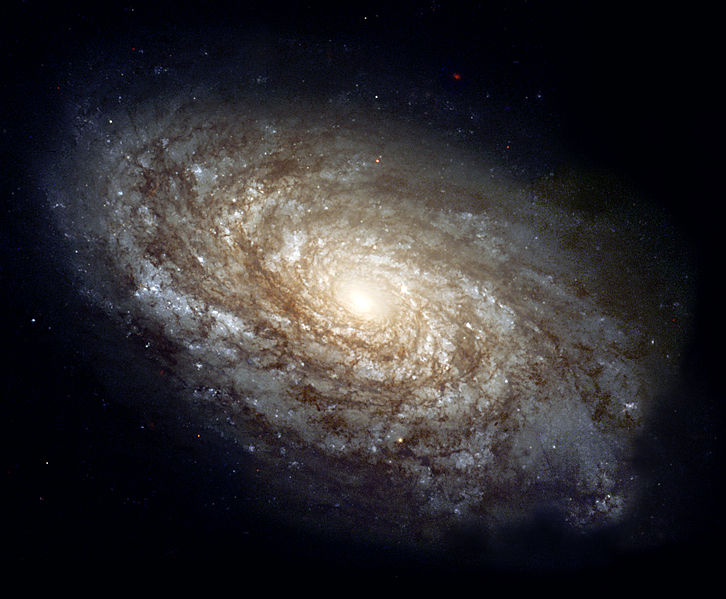 A new study released by NASA claiming a discovery that many galaxies throughout the universe are undergoing an evolutionary process is being questioned by a noted astronomer.
A new study released by NASA claiming a discovery that many galaxies throughout the universe are undergoing an evolutionary process is being questioned by a noted astronomer.
The Astrophysical Journal published a report this week on the “DEEP2 survey,” in which the noted space research agency stated that it had observed signs of change within the shape of various disk galaxies — collections of stars that are of a flat, spherical shape, with a bulge in the center. The discovery surprised many scientists who believed that galaxies have been static since their formation.
“Astronomers thought disk galaxies in the nearby universe had settled into their present form by about eight billion years ago, with little additional development since,” stated Susan Kassin of NASA’s Goddard Space Flight Center in Greenbelt, Maryland. “The trend we’ve observed instead shows the opposite — that galaxies were steadily changing over this time period.”
Research conducted with the Hubble and Keek telescopes produced photographs of galaxies that are estimated at being two to eight billion light years away, and reportedly showed shape formation and organization increasing as rotation speed increased. Galaxies that were father away from the Milky Way were more chaotic, while those closer were more distinct in shape.
“Previous studies removed galaxies that did not look like the well-ordered rotating disks now common in the universe today,” explained Benjamin Weiner of the University of Arizona. “By neglecting them, these studies examined only those rare galaxies in the distant universe that are well-behaved and concluded that galaxies didn’t change.”
However, not all astronomers are quick to believe that the study produces proof of secular evolution. Dr. Danny Faulkner, an astronomy and physics professor of 26 years at the University of South Carolina Lancaster, told Christian News Network that while the discoveries are fascinating, he believes that they are inconclusive.
“This type of observation has really not been tried before, because you need to do spectroscopy — that’s spreading the light out in different wavelengths and measuring emission features in the spectrum,” he said. “It requires an enormous amount of light and the largest telescopes available.”
“What I’m concerned with here is that we see basically snapshots,” Faulkner continued. “We have photographs of galaxies; we have measurements of motions of gas within them, and people tend to want to interpret them in terms of evolution – going from many cases from less order to more order, which is not the way we see the world work.”
He noted that according to the second law of thermodynamics, chemicals go from high order to low order and gravitationally from high energy to low energy — not the other way around.
“We see the systematic differences showing up in this study, but is it really going from less order to more order? I have to question that interpretation completely,” Faulkner added. “The only other systematic difference that I’m aware of is that at great distances, gallaxies are a bit bluer than they are locally.”
The professor states that it is possible that what astronomers are really seeing is simply “different galaxies with different characteristics at different distances.”
“As a creationist, I believe that we could interpret these systematic differences in probably a different way,” Faulker said. “[NASA is] choosing to interpret [their studies] entirely in terms of a gradual evolution of processes. I don’t think that’s necessarily warranted.”
Dr. Faulkner noted that there have been a various theories in place over the years regarding the formation of the galaxies, including that small clusters of stars merged with others to form the groupings we see today.
“That theory in the last decade or so has become very popular,” he said.
“The Milky Way galaxy must have gone through the same rough-and-tumble evolution as the galaxies in the DEEP2 sample, and gradually settled into its present state as the sun and solar system were being formed,” NASA asserted, referring to its belief that earth’s galaxy evolved over 4 billion years ago. However, many scientists state that they find this hard to believe, as it has been proven that the earth is positioned at the exact perfect distance from the sun and moon for life to exist on earth. They explain that if the earth were even a few degrees closer or further away from the sun, the earth would either be completely scorched or enveloped in frozen tundra.
Kassin of NASA did note, however, that further research is needed on the topic.
“[T]he simulations as they are now are only giving us clues as to what’s going on,” she said. “In order to get the detailed measurements to really find out what’s going on, we’re going to need the James Webb space telescope.”
As for Faulker, who will be joining the staff of the Christian organization Answers in Genesis in January of 2013, he states that he hopes to continue to study these matters, and notes that he would be glad to see more entering the field of astronomy.
“I don’t have an answer yet for these things, but I’m confident that with time and reflection and God’s leading, that we can come up with very physically robust explanations of what we’re seeing here within a creationist framework,” he said. “I don’t feel threatened at all [by evolutionary claims]. I think this can be interpreted in a number of different ways.”
Become a Christian News Network Supporter...


